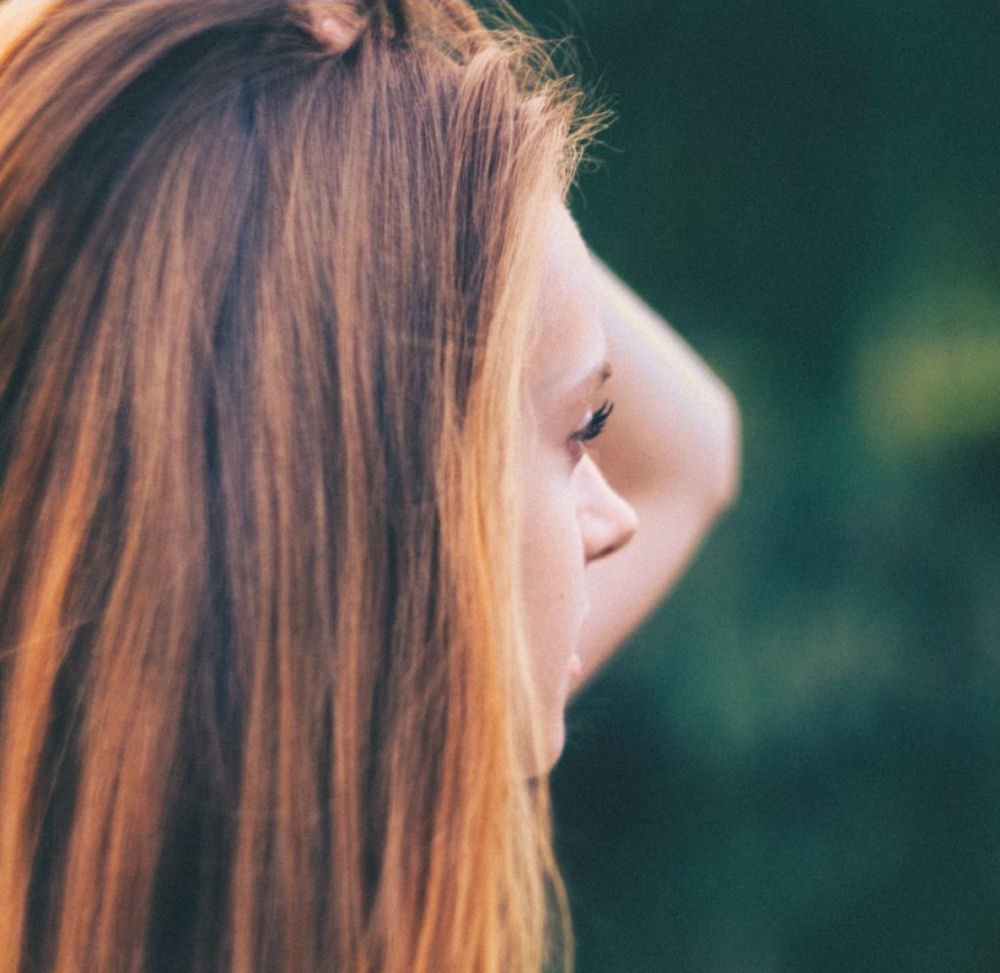Trichotillomania in Teens and Young Adults
Therapists try to help teens begin making connections between their feelings and their behaviors, while providing a safe, objective point of view that can help teens to notice and observe their behavior, rather than feeling controlled by it.
Trichotillomania is an impulse control disorder characterized by teens repeatedly pulling and/or twisting hair until it breaks off. Impulse control disorders are a form of mental illness in which teens are unable to resist a reoccurring urge to act in a way that’s harmful or dangerous. In the specific case of trichotillomania, teens are unable to stop this behavior of hair pulling, regardless of pain, and even as hair becomes thinner as a result.
Females are four times more likely to be affected than males, and sometimes, they might pull hair from other body parts as well, such as eyebrows or eyelashes. More than just a strange behavior, trichotillomania is unusually common and is often a maladaptive coping mechanism, wherein teens inflict pain on themselves as a way to release pressure or stress (in this case, through hair pulling).
What Does Teen Trichotillomania Look Like?
- Teens with trichotillomania are regularly pulling their hair out. They usually target the scalp, but may also pull from their eyebrows, eyelashes, and other areas of the body.
- Teens with trichotillomania will often report either a sense of pleasure, or a sense of relief/release after pulling some hair.
- Trichotillomania may increase with stress and includes acts of biting or chewing hair out of your own body.
- Teens with trichotillomania have strange bald patches, lacerations, rashes, and other signs of hair pulling/eating.
- It may also be common in cases of trichotillomania to eat hair or play with it.
What Causes Trichotillomania?
Mental health issues – teens with other mental health issues, particularly anxiety disorders, depressive symptoms, mood disorders, and forms of obsessive-compulsive disorder (OCD) are more likely to present with trichotillomania than others.
Stressful circumstances – because it is often born out of a need to release stress, it is much more likely to develop trichotillomania in times of significant distress, as well as prolonged periods of pressure. Financial pressure, trouble at school, trouble at home, or excessive worries and anxiety symptoms can all help develop trichotillomania as a coping mechanism.
Age and gender – this issue is most prevalent among younger teens, as well as much younger children (preschool age). It is far more common among young teen girls and women according to self-reporting studies, but young children experience trichotillomania equally across both genders.
How Can I Help My Teen with Trichotillomania?
Encourage the use of healthier stress relief – trichotillomania is often used either to relieve stress and cope with a difficult situation or to elevate a depressed mood. Other coping mechanisms are crucial if a teen is going to get through the treatment process and come out the other end effectively armed against recurring issues. Help your teen pick out activities and stress relief techniques that they enjoy and find most effective as a way to quit the habit.
Talk to your teen about support groups – one of the major issues with trichotillomania is the shame associated with the problem, and the fact that many teens cannot adequately express themselves out of fear that they might elicit alienating or judgmental reactions from others. Support groups can change this, providing the help teens need to properly discuss their experiences and feelings, and find out how others have been living with this condition and avoiding problems.
Encourage a healthy lifestyle – an effective way to help reduce repeated behaviors and encourage continued recovery when dealing with a mental health problem is by focusing on diet and exercise. Good food and regular exercise can significantly impact a person with mental health issues, particularly teens who are going through a confusing and difficult transition in their lives as they approach adulthood.
How Teen Trichotillomania Is Treated
Treatment for trichotillomania centers around reducing feelings of anxiety and depression, and helping teens find alternative ways to cope with pain and relieve pressure. The urge to bite, pull, or eat hair stems from a variety of issues, and there is no direct cure. But each case can be managed individually, and a proper solution can be identified by working with teens to figure out the best path forward, rather than adopting a one-size-fits-all strategy.
Medication – Antidepressants and atypical antipsychotic medication have been found to potentially help teens with trichotillomania find relief for some of the symptoms and problems that commonly coexist with trichotillomania, however, there is no medication that has been proven to “cure” or directly treat trichotillomania. Nevertheless, the use of antidepressants can be promising to help stymie feelings of depression and/or anxiety.
Habit Training – Habit reversal training is a type of behavior therapy used to treat trichotillomania by teaching teens how to properly adjust their behavior in situations where they are likely to be triggered to pull or eat their hair. Teens are taught techniques to help them avoid giving in to their urges, and specific cues are taught in order to recognize situations that might trigger trichotillomania.
Cognitive Therapy – A type of talk therapy, cognitive therapy helps teens dissociate from their behavior and view it from a more objective point of view, allowing them to realize how distorted their inner logic may be, and allowing them to better recognize when their thoughts are being irrational, identifying moments that may be challenging and implementing ways to deal with such moments.

Helping Teens with Trichotillomania at Paradigm Treatment
At Paradigm, we always seek to treat the underlying issues in conjunction with outward behaviors and physical symptoms. Because the specific cause of trichotillomania is unknown, but is often seen as a co-occurring disorder, we pay special attention to such symptoms in both our initial psychiatric evaluation as well as our teen trichotillomania treatment planning and all sessions. Trichotillomania used to be seen as similar to OCD in the sense that it is a compulsive disorder, particularly tied to feelings of angst and anxiety. However, it may have less in common with OCD than previously thought, and many parallels can be drawn between trichotillomania and self-harm.
Individualized Treatment at Paradigm – We use a combination of teen trichotillomania treatment approaches, including talk therapy, behavioral therapy, and sometimes, medication. Within talk therapy sessions, our therapists help teens to evaluate and address the impulse of pulling and/or eating hair. By doing so, therapists try to help teens begin making connections between their feelings and their behaviors, while providing a safe, objective point of view that can help teens to notice and observe their behavior, rather than feeling controlled by it. Through cognitive behavioral therapy and other techniques, teens can be taught to dissociate from their own behavior and consider how it affects them and others, confronting it effectively and safely.
Therapists also work with teens to develop other habits and/or alternative resources to help them cope with stress, with the aim of teens being able to replace the hair pulling with a healthy behavior. Depending on teens’ different interests, therapists might also help them to begin incorporating other positive activities that can alleviate stress, build confidence, and “distract them” from their desire to pull hair.
Treatment in the Long-Term – Therapists simultaneously work with teens to identify the factors that contributed to the behavior. While poor impulse control takes dedicated treatment to correct, it’s also important to help teens adapt to their condition if they cannot overcome it. The use of cognitive behavioral therapy and other forms of talk therapy help tremendously here, helping teens dissociate themselves from their actions and consider how best to approach them. In this way, we seek to support teens not to only stop pulling their hair, but also to begin feeling relief from stress and anxiety, gaining confidence in themselves, and feeling empowered in their own lives.
Complete recovery from trichotillomania is very possible for teens. However, it’s a slow process, and patience is crucial. The older a teen is, the longer it may take to treat the issue. It’s recommended that teen trichotillomania treatment be started as early on as possible, which helps make the treatment and recovery both quicker and easier.
Paradigm was the first program that did extensive psychological testing and helped our daughter identify and deal with a serious trauma that we had been unaware of as a family. She came home to us happy, healthy and free of the need for any medication. Our daughter’s time at Paradigm was the first step for our entire family to heal.
Bethany S.
Frequently Asked Questions About Teen Trichotillomania Treatment
Telling someone with trichotillomania to stop pulling out their hair is not going to be an effective solution. Treatment is necessary because trichotillomania is compulsive behavior. Discipline, tough love, and a judgmental environment can negatively impact any progress and make matters much worse, causing teens to develop severe self-esteem and confidence issues, and struggle with symptoms of (or akin to) anxiety. The sooner a teen with trichotillomania can get treatment, the more likely they are to overcome this issue and avoid the physical and mental ramifications that can come along with it.
While it might sound quite strange, the appetite for one’s own hair is surprisingly common, especially among younger teens. Although there is a lack of information on the exact numbers in the United States, and not much has been done to work on the epidemiologic studies for trichotillomania, there is a growing understanding that it is a relatively common expression of stress and self-harm, particularly common among women, who are much more likely to utilize self-harm as a way to cope with stress and negative emotions as well.
Anywhere from 0.5% to 4% of Americans experience trichotillomania at some point in their lives, and while the gender ratio is nearly even among preschoolers and young children, pre-adolescents and young adults with trichotillomania are almost always female. Some argue this discrepancy may be explained by higher stigma amongst men. The later in life the symptoms persist, the more difficult it is to treat trichotillomania. Because there is also a great amount of stigma and shame surrounding trichotillomania, the exact numbers on how common it might be could very well never be fully known.
Other Youth Mental Health Topics You May Find Helpful…
What Are the Symptoms of OCD In Teens?
Adolescents often have routines that they don’t like to break. When does a love of routines cross the line into obsessive-compulsive disorder, commonly abbreviated as OCD? The teen years are […]
Continue ReadingHow to Help Your Teen with Perfectionism
Perfectionism is a common pattern among teens. Perfectionism is a person’s striving for flawlessness and setting excessively high performance standards. Perfectionists tend to compulsively reach for their goals and measure […]
Continue ReadingTeen OCD: ERP Therapy Works
Imagine having irrational thoughts, intense rituals of washing your hands repeatedly, for instance, and strong fears. Obsessive-Compulsive Disorder (OCD) can be a debilitating psychological illness if not treated, and it’s […]
Continue Reading
Lucy Nguyen is the Executive Director at Paradigm Treatment, overseeing all clinical treatment programs across the organization’s southwestern region. Her extensive experience includes working with young adults in private practice, serving as a therapist for children and teens with emotional and behavioral needs, and acting as a behavior interventionist for teens with developmental disorders. Lucy integrates cognitive-behavioral approaches with mindfulness and compassion in her work, and she is also EMDR-trained. She holds a Master of Science in Counseling from California State University, Fullerton, and a Bachelor’s degree in Psychology and Social Behavior from the University of California, Irvine.




